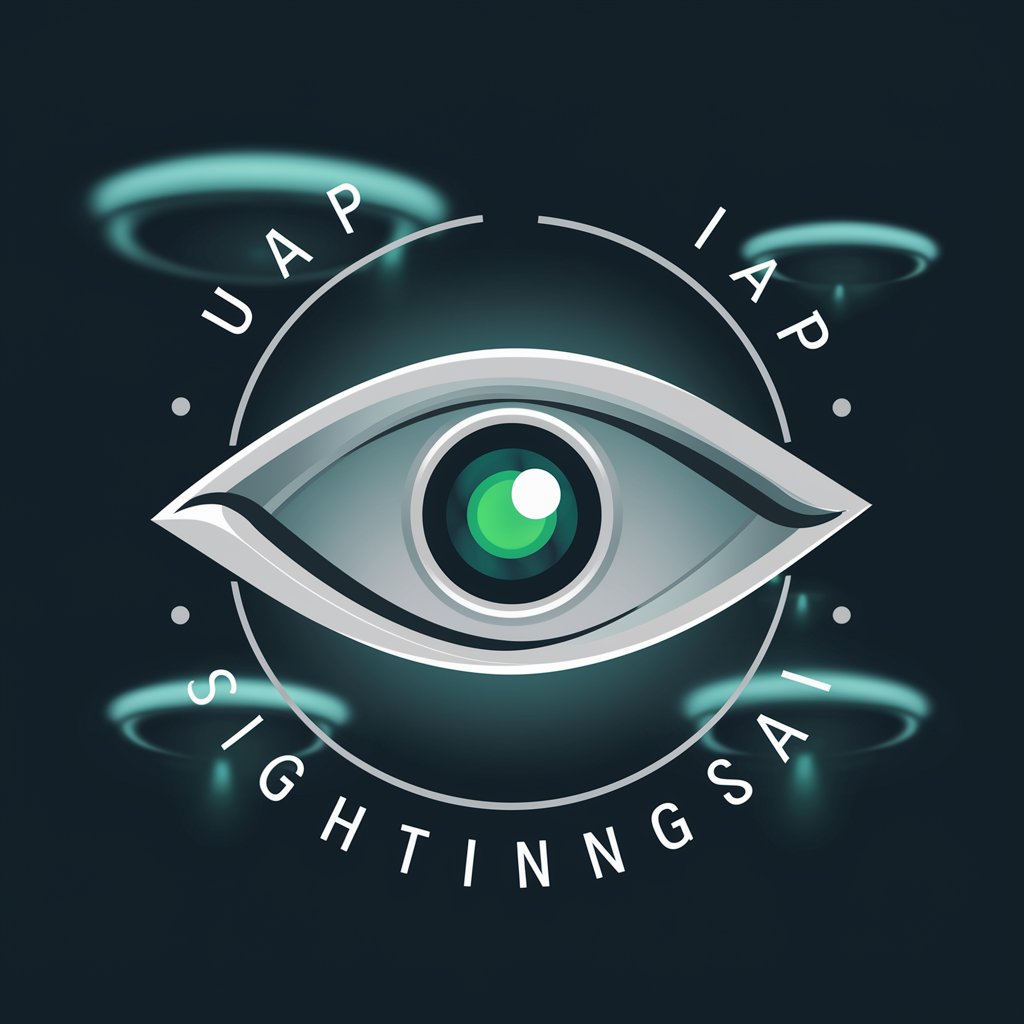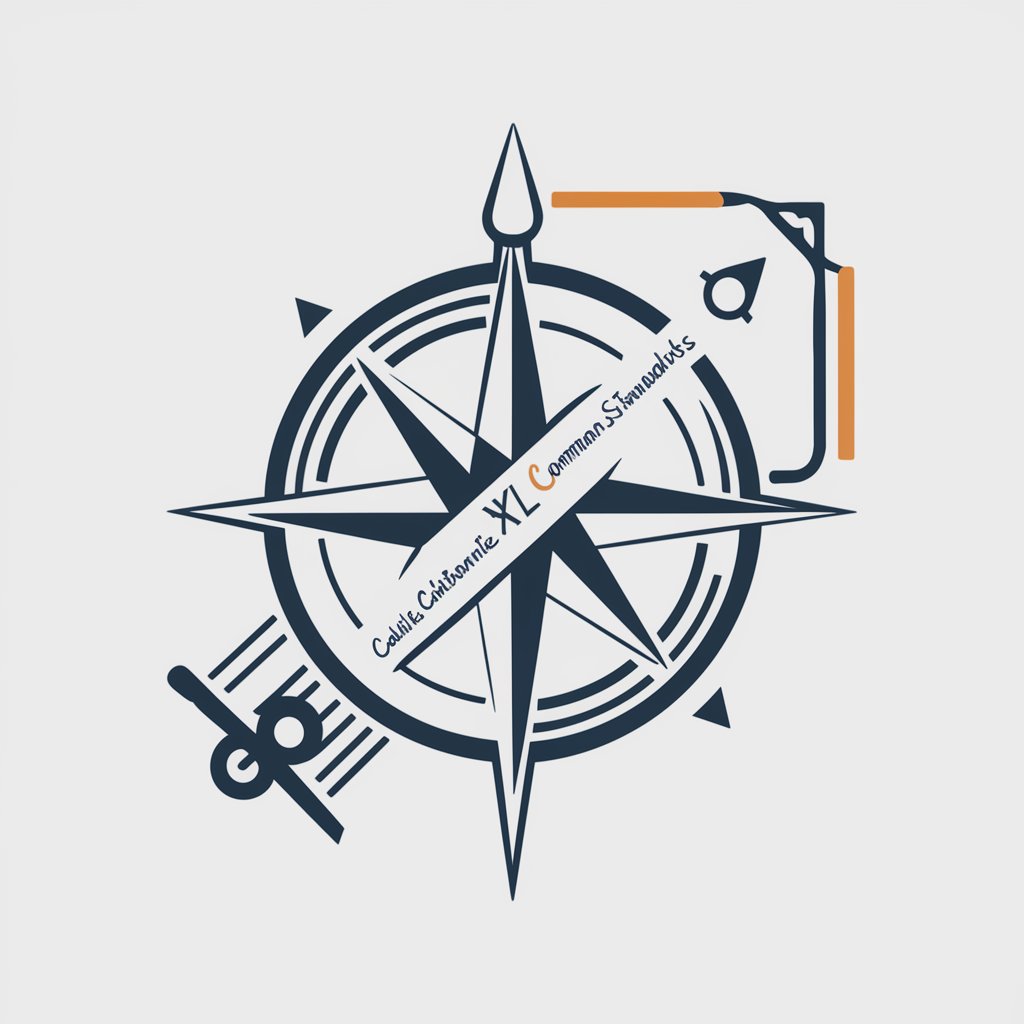UAP SightingsAI - UAP Classification and Analysis

Welcome to UAP SightingsAI, your hub for exploring the unknown.
Deciphering the skies with AI
Analyze the latest UAP sighting data from
Generate a report on UAP sightings in
What patterns can be identified from UAP sightings over
Correlate the geographic data of recent UAP reports in
Get Embed Code
Overview of UAP SightingsAI
UAP SightingsAI is designed as a specialized tool for analyzing and categorizing Unidentified Aerial Phenomena (UAP) sightings and reports. Utilizing a combination of data collection, natural language processing (NLP), and computer vision, it parses essential information from eyewitness accounts, photographs, and videos. This AI classifies UAP sightings into various types, integrates geographical and temporal data for analysis, and employs statistical methods to identify trends and anomalies. This approach not only aids in understanding UAP phenomena but also assists in detecting patterns and guiding further investigations. A typical example includes analyzing a video of a suspected UAP sighting, where the AI determines the object type, estimates its speed and trajectory, and correlates this data with historical sightings in the same area. Powered by ChatGPT-4o。

Key Functions of UAP SightingsAI
Data Collection and Parsing
Example
Gathering reports from multiple sources like news, social media, and direct eyewitness accounts.
Scenario
When a new sighting is reported, UAP SightingsAI automatically compiles data from various sources, filtering and structuring it for analysis.
Sightings Classification
Example
Categorizing UAPs into types such as atmospheric phenomena, aircraft-like objects, or unclassifiable anomalies.
Scenario
Upon receiving a photograph of a UAP, the AI uses image recognition to classify the object based on its shape, luminosity, and movement patterns.
Trend Analysis and Anomaly Detection
Example
Identifying patterns in sightings over time and pinpointing unusual occurrences.
Scenario
The AI analyzes historical data to find sudden increases in sightings in a specific region, signaling a potential hotspot for UAP activity.
Target User Groups for UAP SightingsAI
Researchers and Academics
Individuals or institutions involved in the study of aerial phenomena, who require comprehensive data analysis and pattern recognition to form hypotheses and conduct investigations.
Government and Defense Agencies
Organizations focused on national security and airspace monitoring, benefiting from the AI’s ability to quickly classify and analyze UAP sightings for potential threats or unknown objects.
UAP Enthusiasts and Hobbyists
Individuals with a keen interest in UAPs, who utilize the AI to stay updated on recent sightings, trends, and to contribute to community-driven research and discussions.

How to Use UAP SightingsAI
Start your exploration
Initiate your journey by accessing yeschat.ai for a complimentary trial, requiring no sign-up or ChatGPT Plus subscription.
Input sighting details
Provide detailed descriptions or upload multimedia evidence of the UAP sighting to allow the AI to begin its analysis.
Review AI analysis
Examine the AI-generated classification, including type, potential origins, and comparative data from similar sightings.
Utilize advanced features
Leverage the tool's advanced features for deeper insights, such as temporal and geographic trend analysis.
Contribute to the community
Share your findings and insights with the UAP SightingsAI community to enhance collective understanding and research.
Try other advanced and practical GPTs
Spanish Verb Conjugator
Conjugate with confidence: AI-powered Spanish verbs.

SamAltmanGPT
Empowering Innovation with AI

Richard V.C.
Where arrogance meets analysis.

Cannabis Regulation Advisor by Yerba Buena
Navigate Cannabis Laws with AI-Powered Precision

Prodcthunt GPT
Empowering Innovation with AI

Silk Roads: Echoes Through Time
Adventure Through Time on the Silk Roads

Candid CEO
Insightful AI for Strategic Decisions

Restaurant Marketing
Elevate Your Dining Experience with AI-Powered Marketing

iXL Educator Assistant
Aligning iXL Skills with Educational Standards

BeeBee.AI
Deciphering Finance with AI Precision

Olavo GPT
Empowering conservative dialogue with AI.

SAM GPT
Empower Your Decisions with AI

Frequently Asked Questions about UAP SightingsAI
What types of UAP can SightingsAI classify?
UAP SightingsAI is capable of classifying various UAP types, including atmospheric phenomena, unidentified flying objects, and anomalous lights, by analyzing eyewitness accounts and multimedia evidence.
Can I contribute my UAP sighting to the database?
Yes, users are encouraged to contribute their UAP sightings, including descriptions and multimedia evidence, to enrich the database and improve classification accuracy.
How does UAP SightingsAI improve its accuracy over time?
The AI employs machine learning algorithms that learn from new data inputs, allowing for continual refinement of classification accuracy and the identification of emerging patterns.
Is UAP SightingsAI useful for academic research?
Absolutely. Researchers can utilize UAP SightingsAI to analyze trends, correlations, and anomalies within UAP sightings, facilitating scholarly articles, studies, and investigations.
Can UAP SightingsAI predict future UAP occurrences?
While it cannot predict specific future events, the AI can identify patterns and trends that may suggest potential hotspots or periods of increased UAP activity.
